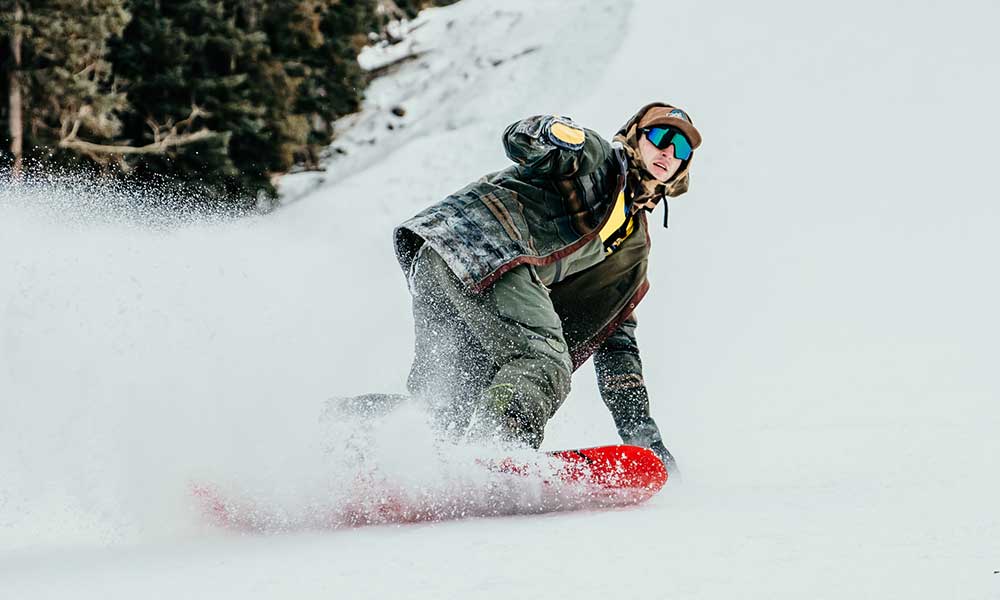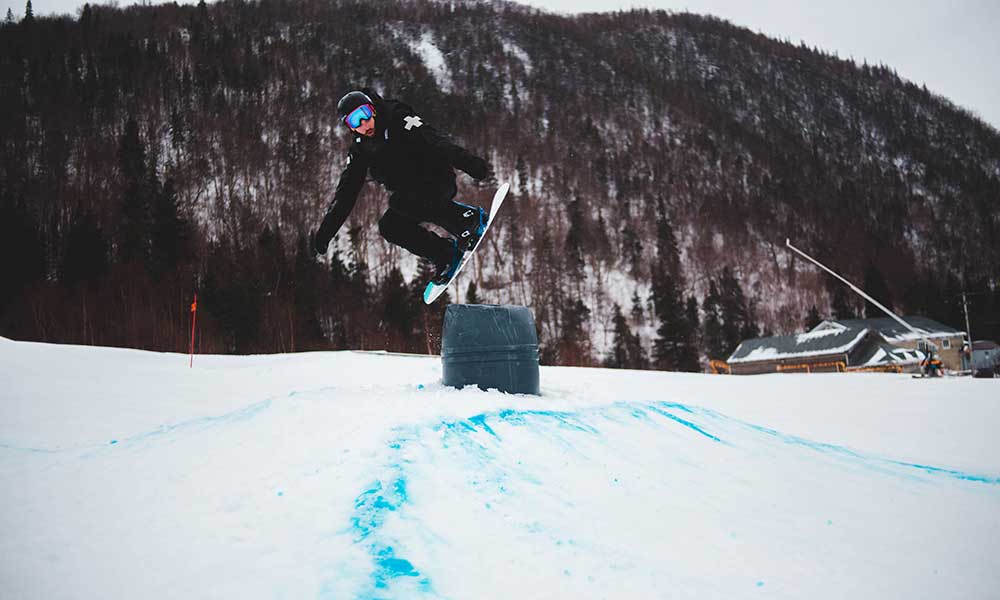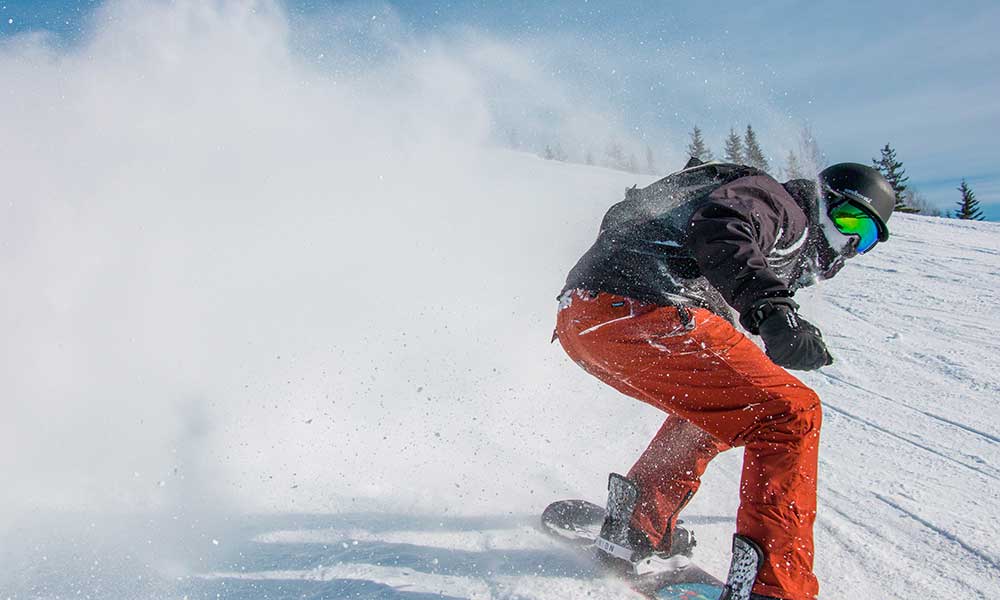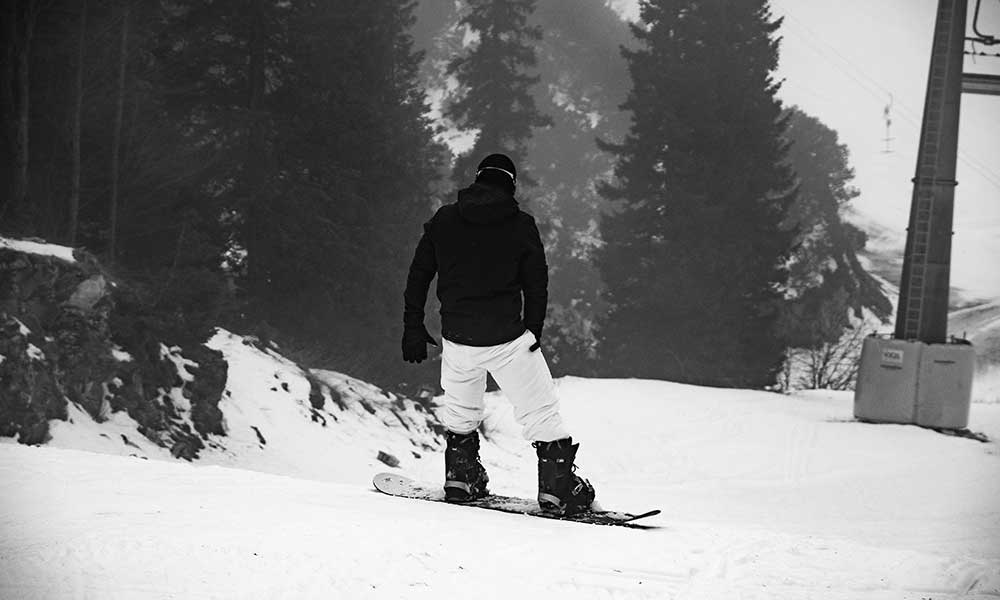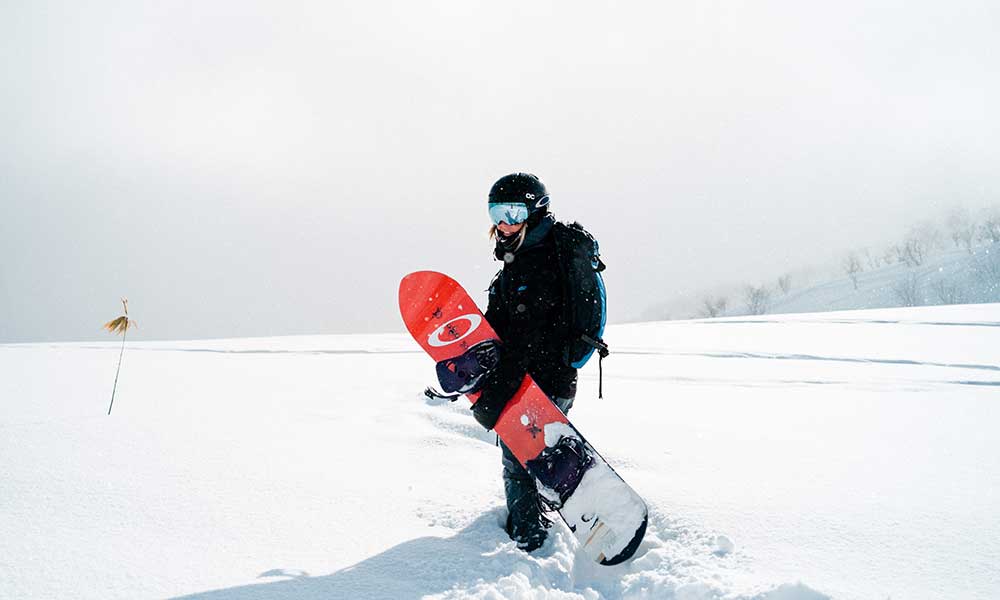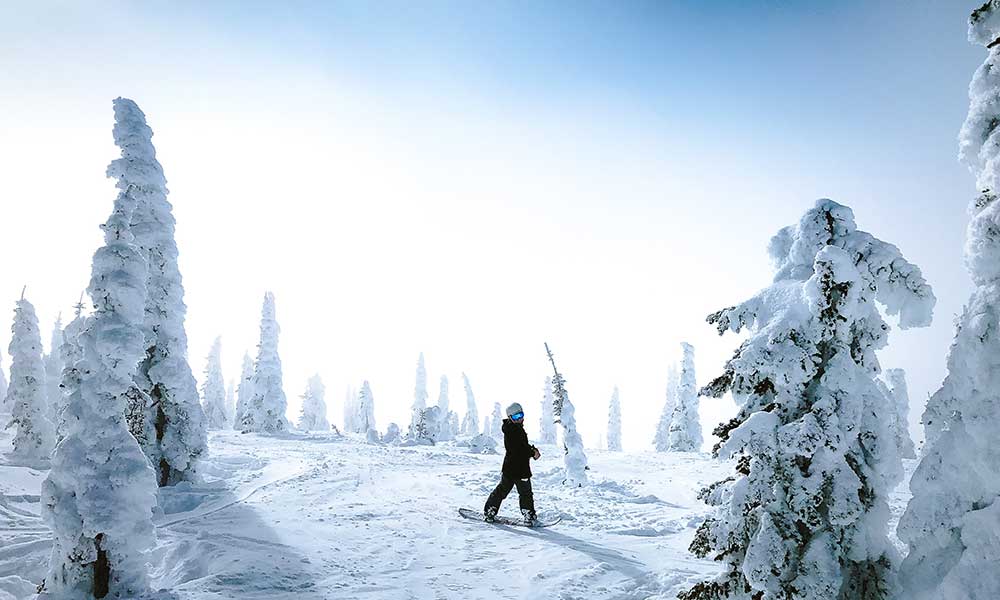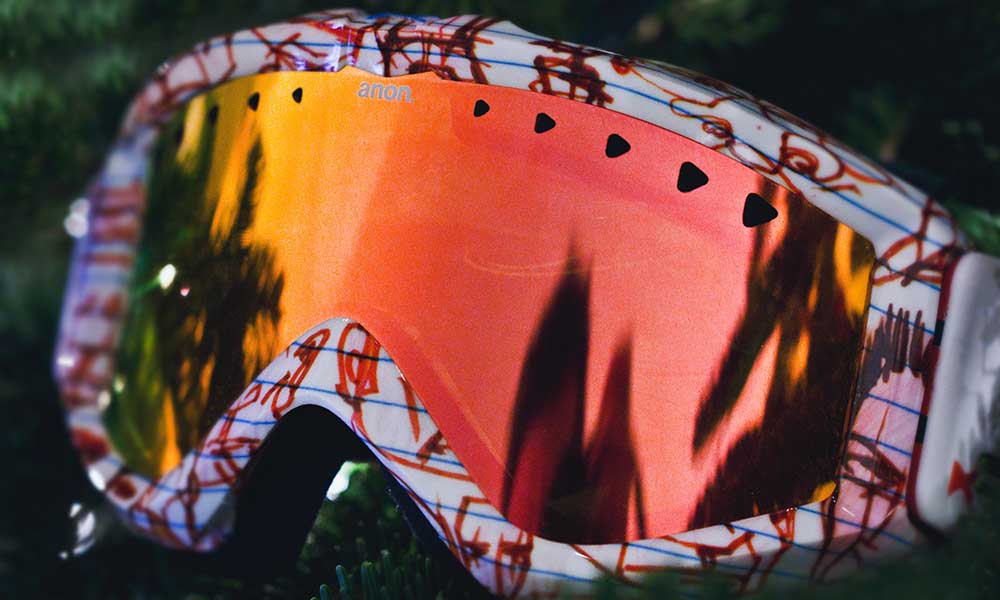Where did modern snowboarding get its start, who were the sport’s biggest innovators, and what does the future hold for this sport?
In this guide to the history of snowboarding, we’ll answer all those questions and more as we dive into the past, present, and future of this winter sport.
Who Invented Snowboarding?
The history books record that snowboarding was invented in 1965, when Sherman Poppen, an engineer from Michigan, fastened two skis together to create a toy for his daughters.
Poppen called this toy the “Snurfer”, as a cross between “surfer” and “snow”, and it was eventually licensed to a toy company who sold a massive 500,000+ snurfers the following year.
But humans have been traversing snow for thousands of years.
In fact, there are cave paintings dating back to the final ice age of the Paleolithic Era that depict the use of skis.
It’s not much of a stretch to assume that the first snowboard was actually a contraption used for rapid travel, fun, or even hunting by our Paleolithic ancestors.
It’s also likely that the idea had been used in modern times as well, as most people can relate stories of using spare pieces of wood and metal to create makeshift sleighs and skis in their youth.
Who Was The First Person To Snowboard?
Still, in lieu of any commercialization (or proof), we have to give it to Sherman Poppen.
He definitely had the idea independently and he was also the first person (along with his wife) who was smart enough to commercialize it.
When was Snowboarding Popularized?
Many sports and activities start slowly and build from there.
One of the amazing things about snowboarding is that its growth was rapid.
As noted above, it sold half a million units as soon as it was turned into a mainstream product, and that came just a year after its conception.
In 1968, just three years after Poppen strapped together those skis, the inventor organized the first-ever snowboarding (“Snurfing”) competition.
It attracted the attention of skateboarder Tom Sims.
Skateboarding, like snowboarding, was in its infancy, and Sims’s decision to switch to snowboarding is one of the most important in the history of the sport.
Sims was still in school at the time and he crafted a snowboard in shop class using wood, aluminum sheeting, and carpet.
The idea worked, and in the following decade, he began producing commercial snowboards under the name Sims Snowboards.
Did Jake Burton Invent Snowboarding?
In 1977, Jake Burton Carpenter began building snowboards as well.
Carpenter had been “snurfing” since he was 14, and he impressed fellow snurfers with homemade bindings that ensured his feet remained attached to the board.
The first snowboard made by Jake Burton Carpenter were made from flexible wood plants and while the boards were initially dismissed as being too expensive, Burton Snowboards eventually became the dominant manufacturer and remains the biggest and best to this day.
Both Burton Snowboards and Sims Snowboards, along with other pioneers like Gnu Snowboards (launched by Mike Olson) and Barfoot Snowboards (Chuck Barfoot), were instrumental in arranging the first National Snow Surfing Championships, which were held in Vermont in 1982.
The sport was still lacking mainstream attention during these formative years, but that changed with the launch of A View to a Kill in 1985.
The James Bond flick depicted the leading man on a snowboard (Tom Sims actually stood in as Roger Moore’s stunt double) and brought global attention to the sport.
At the time, many ski resorts refused to let snowboarders on the slopes.
Even today, there are still several resorts in the United States that refuse access to snowboarders.
Notably, there were many slopes in France that embraced snowboarders, and eventually, these influenced US resorts.
The 1990s proved to be an important but difficult decade for the sport of snowboarding.
It was recognized by the International Olympic Committee (IOC) in 1994 and appeared at the 1998 Winter Olympics in Japan, but the addition of snowboarding as an Olympic sport didn’t go down too well initially.
The four events (including a giant slalom and a halfpipe) were often televised in the small hours of the morning and the eventual winner of the giant slalom, Ross Rebagliati, was later disqualified when he tested positive for marijuana (incidentally, Ross Rebagliati would later launch two cannabis companies).
It was a different story at the 2002 Winter Olympics, though.
By that time, snowboarding was nearing its peak.
It was a massively popular winter sport and the events were broadcast during peak times.
In 2006, the growth continued, and by 2010, it had reached its peak as an Olympic sport.
2010 was the year of Shaun White. He landed the first McTwist 1260 (dubbed “The Tomahawk”) and won a gold medal in the halfpipe.
When Did Ski Resorts Allow Snowboarding?
The history of snowboarding is littered with feuds and difficulty.
Despite the hard work of people like Jake Burton and Tom Sims, it took several decades for most resorts to accept the sport.
In the mid-80s, around 40 ski resorts allowed snowboarding, even though the sport had been around for nearly two decades at that point.
Just half a decade later, that number had grown by a factor of 10.
Today, there are just three ski resorts in the United States that don’t allow snowboarding:
- Deer Valley Ski Resort
- Alta Ski Resort
- Mad River Glen Ski Resort
At one point, Burton Snowboards actually offered a $5,000 reward for anyone who could film themselves at these resorts.
Is Snowboarding a Dying Sport?
Snowboarding is not dying as such, but some have argued that it is experiencing a mid-life crisis right now.
In the 1970s it was in its infancy and was just making itself known.
In the 80s and 90s, it was a rebellious teenager.
In the 2000s, it was the super-stylish young adult in the peak of its life.
In the 2020s, it’s all knitted sweaters, slippers, and daytime TV.
Of course, that doesn’t mean that it’s approaching its twilight years and will soon fade into nothing.
As we’ve learned from skateboarding, extreme sports go through peaks and troughs.
On the one hand, some of the greatest individuals in the history of snowboarding have passed away, including both Jake Burton Carpenter and Tom Sims (both of whom died in their 60s during the 2010s).
We’ve also seen many great gold medal winners call time on their careers.
But the sport is far from dead and it’s just waiting for a new innovator or attention-grabbing athlete.
It only takes one video game, film, TV show, or even influencer to ignite the spark and herald another major decade for snowboarding.

